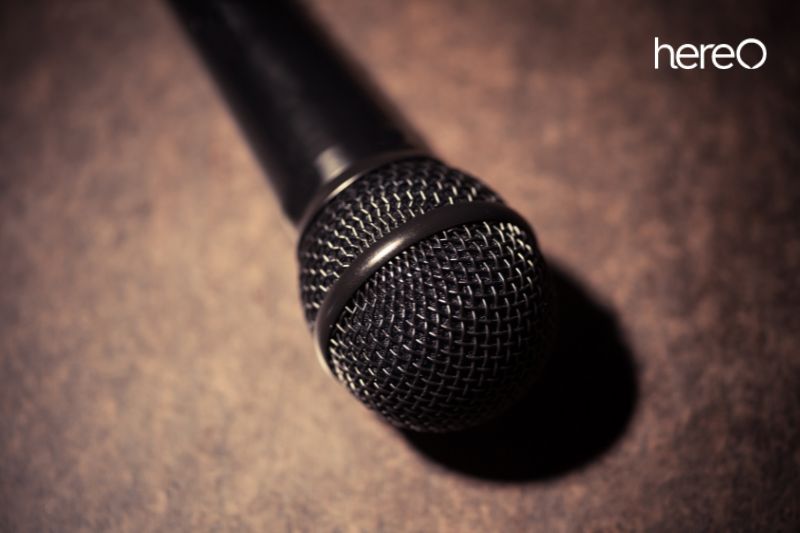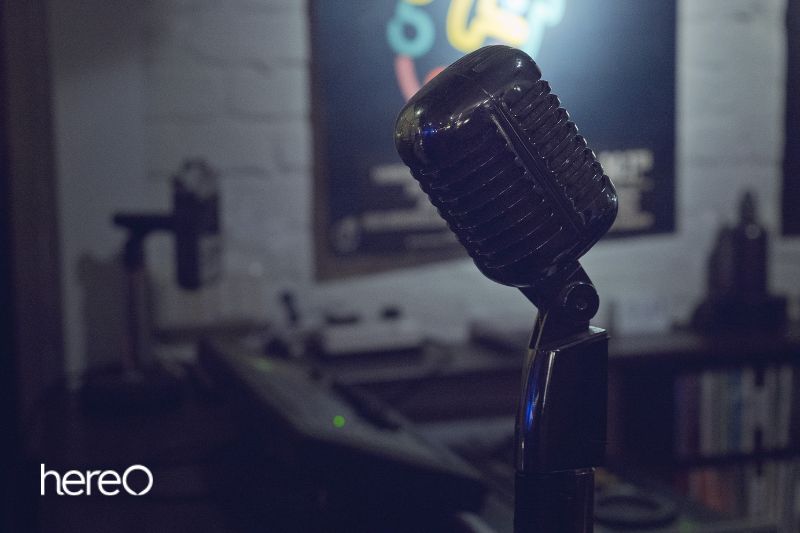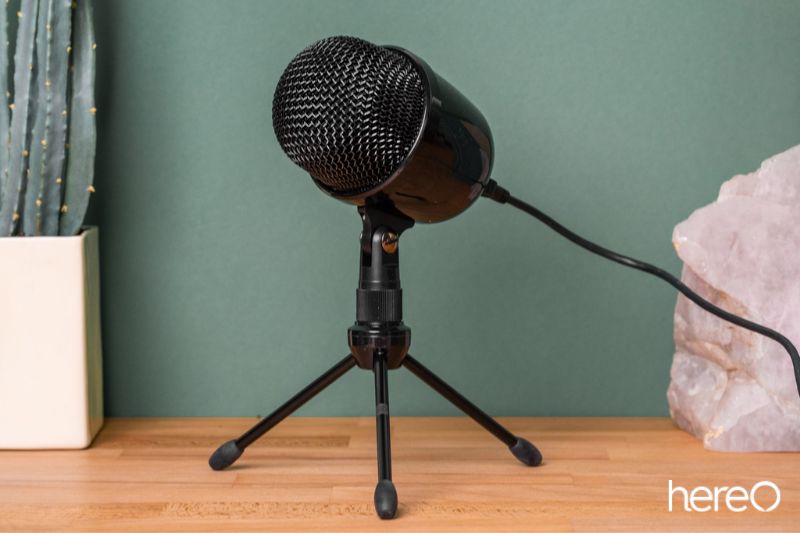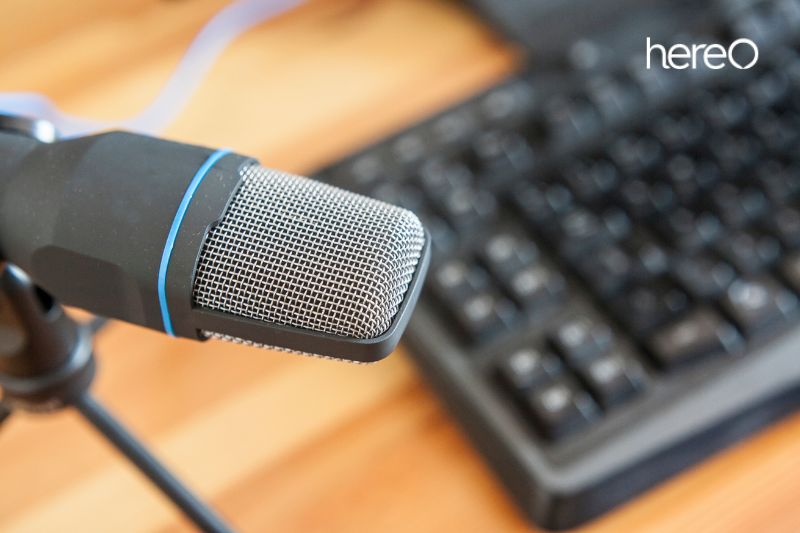If you’re a filmmaker shooting a short film or creating YouTube videos, sound quality is key to production value. That said, it can be intimidating to decide on the right microphone for you. In this article, we will help you figure out what to look for in a microphone and how to buy the best microphone that suits you.
Contents
Types of Microphone

Once you are aware of what you are seeking to record, it is time to choose the appropriate tool. Not all microphones are created alike; some are more effective in particular situations than others. Dynamic and condenser microphones are the two basic varieties, and ribbon microphones are the lesser known.
Dynamic Microphone
A dynamic mic is your best option if you’re just starting out with any kind of audio recording. They’re more affordable and robust than condenser mics, so they can bear a little more punishment if moved. They’re also ideal for a rookie who might make a mistake when setting it up.
They are less sensitive and require a greater SPL (sound pressure level) to detect sound because of their better endurance. They are therefore perfect for live performances that include drums, vocals, and guitar amps. Additionally, they don’t need phantom power.
Condenser Microphone
Condenser microphones contain two subcategories: large diaphragm and small diaphragm.
Small diaphragm condenser microphones provide a good high-frequency response and are very sensitive. They are perfect for sensitive instruments including cymbals, hi-hats, and percussion.
The frequency response of large diaphragm condenser mics is superior overall and extends to lower frequencies, making them perfect for recording vocalists and acoustic guitars. They are also sensitive to high frequencies. Typically, you’ll find this microphone in podcasting or recording studios.
Condenser microphones have some drawbacks, like being particularly sensitive and hence more prone to damage, being pricey, and requiring an additional power source, typically an audio mixer or interface (phantom power).
Ribbon Microphone
When compared to other microphones, the ribbon mic’s sound output has the frequency range that is closest to that of human hearing. They excel at capturing tiny sounds, which makes them perfect for applications like ASMR, but they also help soften stronger sound waves like those produced by guitar amplifiers.
The downside is that they are extremely delicate, so you must handle them with care. And if you supply it with 48V phantom power, the conductive ribbon on the inside of passive ribbon microphone will be electrocuted—don’t make this mistake.
What Is Microphone Sensitivity?

The sensitivity of a microphone is an important factor to consider when picking one out. It’s a measure of how well the microphone converts acoustic energy into electrical energy.
Manufacturers typically measure the sensitivity of a microphone by producing a 94 dB SPL, 1,000 Hz (1kHz) pure tone at the mic capsule and calculating the resulting output. This is known as the industry-standard test.
Low sensitivity microphones require more preamp gain than higher sensitivity ones, but this is at the expense of poorer audio quality due to the noise often added by preamps.
There is no hard-set rule for proper use of low versus high-sensitivity microphones, it really depends on the application and the quality of the preamp the microphone is plugged into.
Should You Get a USB or XLR Microphone?

When it comes to choosing a microphone for your home studio, it’s important to consider whether you should get a USB or XLR microphone. There are pros and cons to both types of mics. While USB microphones offer convenience and affordability, XLR microphones are more versatile and offer clearer sound quality.
The main difference between the two types of mics is the connection. An XLR microphone has 3 prongs in its connection, so it must be connected to an interface before connecting to your computer. A USB mic boasts a direct connection to your computer.
USB Microphone
Although there are a few dynamic USB microphone options, condenser microphones predominate. They are plug-and-play microphones, which has the ability to attach a USB microphone directly into your computer without the need of other device. For home recording studios, they are the perfect microphone because of this.
On average, USB microphones are less expensive than XLR microphones. If you’re brand-new to recording and don’t want to spend a fortune figuring out if it’s a good fit for you, their price is fantastic.
XLR Microphone
XLR microphones are ideal in a variety of various recording circumstances and provide higher quality audio capture and more nuanced audio recording.
You may benefit from the inclusion of characteristics like richer audio, a higher dynamic range, and cleaner sounding audio, depending on the type of XLR mic you use.
Compared to USB mics, XLR microphones are typically more expensive (on average). You’ll also require an audio interface, a mic stand, possibly a pop-filter, and a phantom power supply in addition to your microphone.
Due to this, it is challenging to advise purchasing an XLR microphone if you have never recorded audio before.
Polar Patterns of Microphone

The directionality of a microphone explains how it extracts sound from its surroundings. Some microphones can concurrently pick up sound from all directions while the majority of other microphones can only pick up sound from one direction, which can be advantageous depending on the circumstance.
Omnidirectional
An omnidirectional microphone has no proximity effect and will gather sound equally from all directions. It won’t be difficult to position them.
The drawback is that it might be quite challenging to completely shut out ambient noise. Any additional instruments will also “bleed” across. It records everything that is heard.
They are frequently used for live studio performances with the aim of simulating the sound of the space, however they are not suitable for usage live due to their high susceptibility to feedback.
Cardioid
This heart-shaped pattern is perfect for a voice or for speaking directly into it, despite the fact that the heart is on its side. It is the polar pattern you will encounter most frequently. It will barely pick up any sound coming from the sides, much less from behind.
Supercardioid
Supercardioid microphones have a narrower pickup than their cardioid counterparts, enabling a higher level of ambient sound suppression. Supercardioid microphones, unlike cardioid microphones, also have some pickup immediately at the rear, as depicted in the above diagram.
Supercardioid microphones are resistant to feedback and are best for picking up a single sound source in noisy settings.
Bi-directional
This design will provide you with a strong front- and back-sound collection response. You receive clear rejection from all sides as well. Ideal for recording instruments that are side by side or closely spaced apart, as well as for in-person interviews.
These microphones, which can cost up to $500 or more, are quite popular among podcasters.
Proximity Effect

Every time the microphone approaches the sound source, the proximity effect causes the low-frequency response to rise. You may have noticed that a person’s voice, particularly a man’s voice, sounds much deeper when they are quite close to the microphone. The proximity effect is that.
The polar pattern of the mic will influence how strong the proximity effect is. The effect is more pronounced the more diversity there is in the pattern. This indicates that omni-directional microphones completely lack the effect.
Frequency Response
This information reveals how well the microphone reproduces the frequency range it is hearing. Graphs are commonly used to illustrate it. Frequency responses are frequently stated as 20Hz–20kHz. Although that number is quite typical, it does not indicate the sensitivity at each frequency band.
Various frequency responses are better suited for various recording needs. It will be different from recording a kick drum to record vocals.
A graph is the most precise tool for evaluating the response. However, there isn’t enough room or time in this article to discuss that.
FAQs about What To Look For In a Microphone

What are the qualities of a good microphone?
When shopping for a microphone, it’s important to consider the type of application you need it for. In addition to the type of microphone, you should also consider the frequency response and directionality of the mic. Don’t forget to consider any additional accessories or packages that may accompany your purchase.
What are the 4 characteristics of every microphone?
The four characteristics to every microphones are:
- Output level
- Frequency response
- Out impedance
- Directivity
How to pick the right microphone for your voice?
The most popular microphones for capturing vocals, especially spoken words, are condenser mics. This is so that they can record your voice in better detail due to their wider diaphragms. Condensers help improve the recordings’ high-end frequencies.
Conclusion
When it comes to finding the right microphone for your film or video production, there are many options to choose from. By understanding what type of microphone you need, considering your budget and familiarizing yourself with the features of quality microphones, you can make an informed decision that best suits your needs.
Now that you know what to look for in a microphone, take the first step towards improving your production value by finding the perfect microphone for you!
Thank you for reading. HereOfamily hope you enjoy reading this article.
